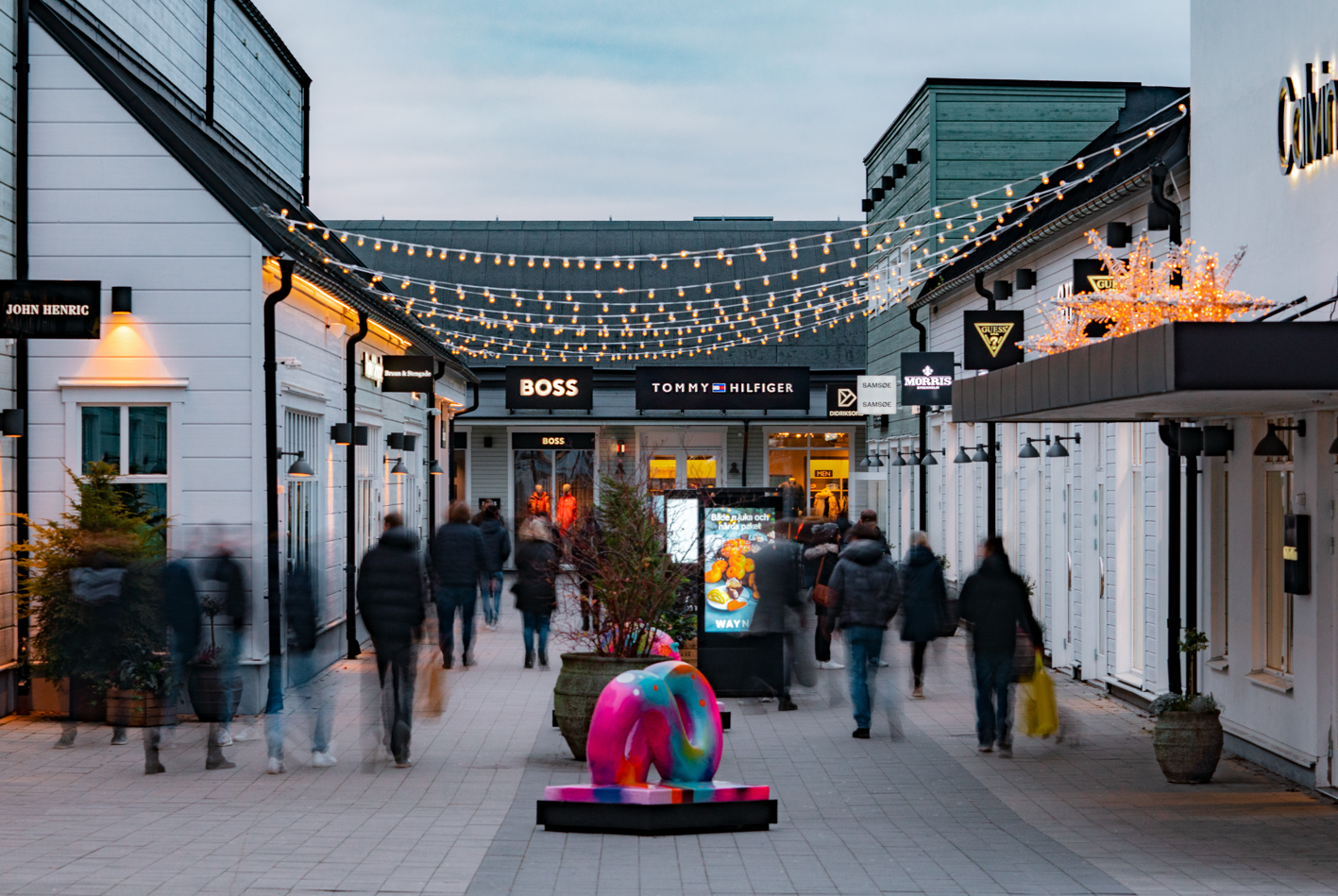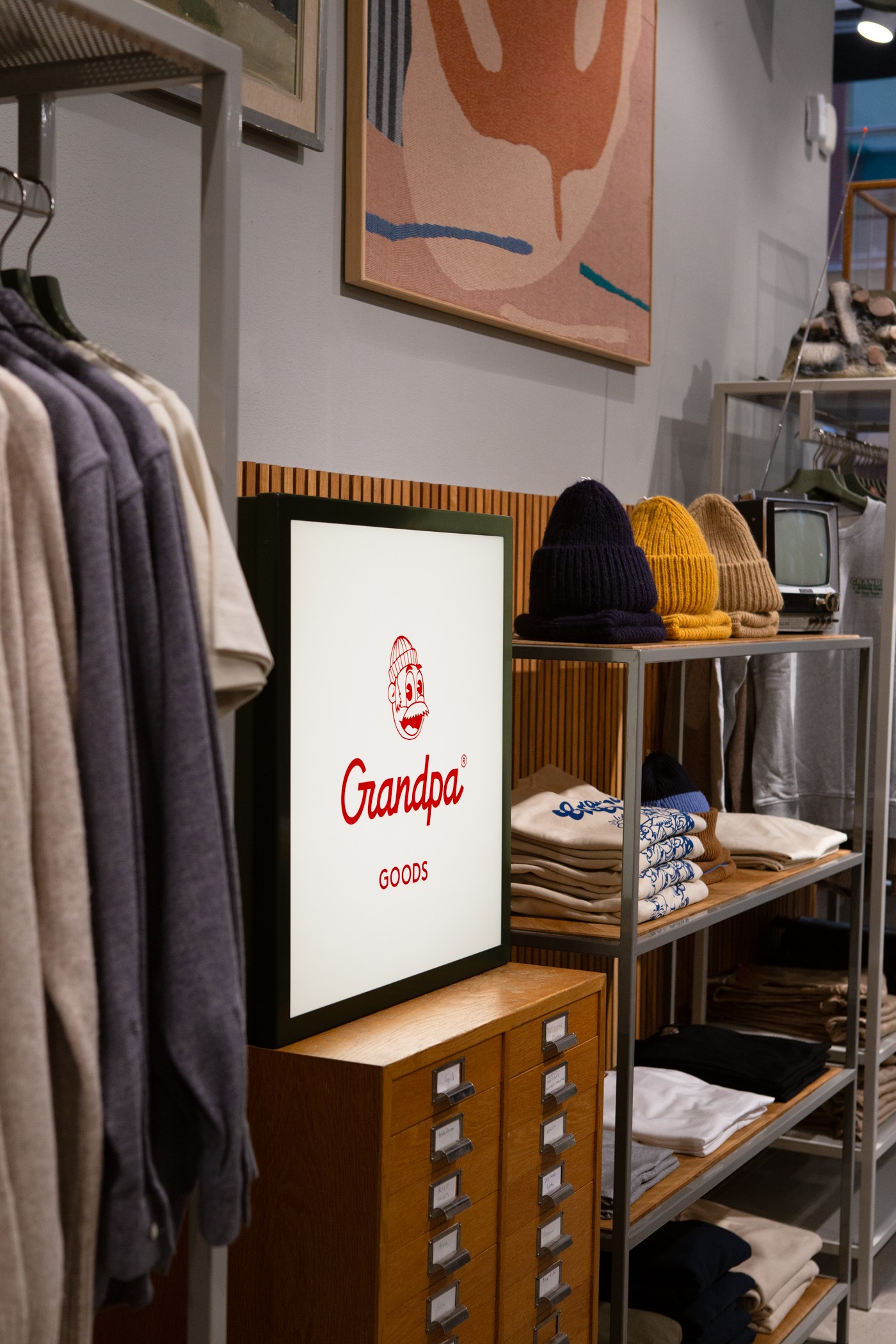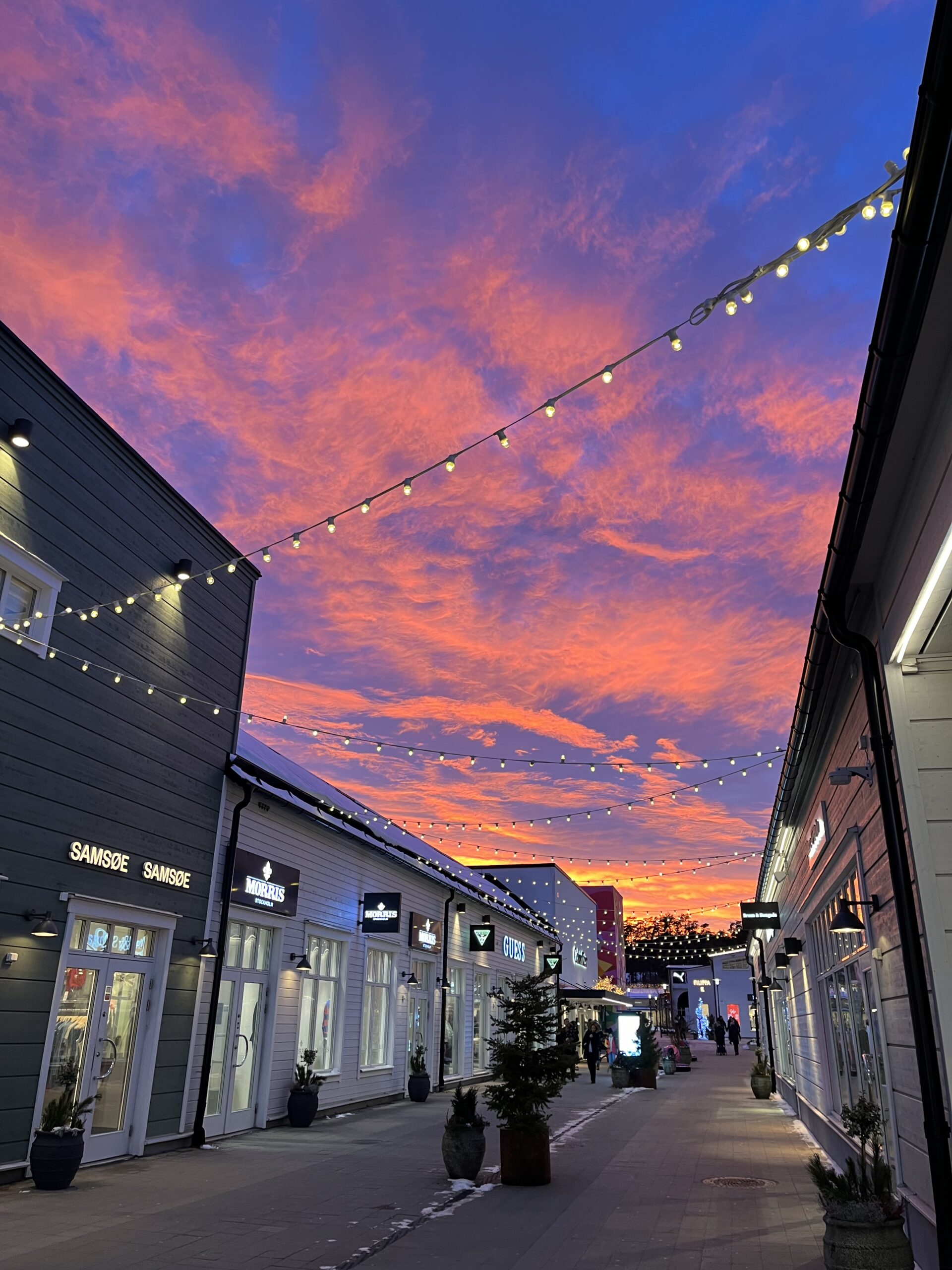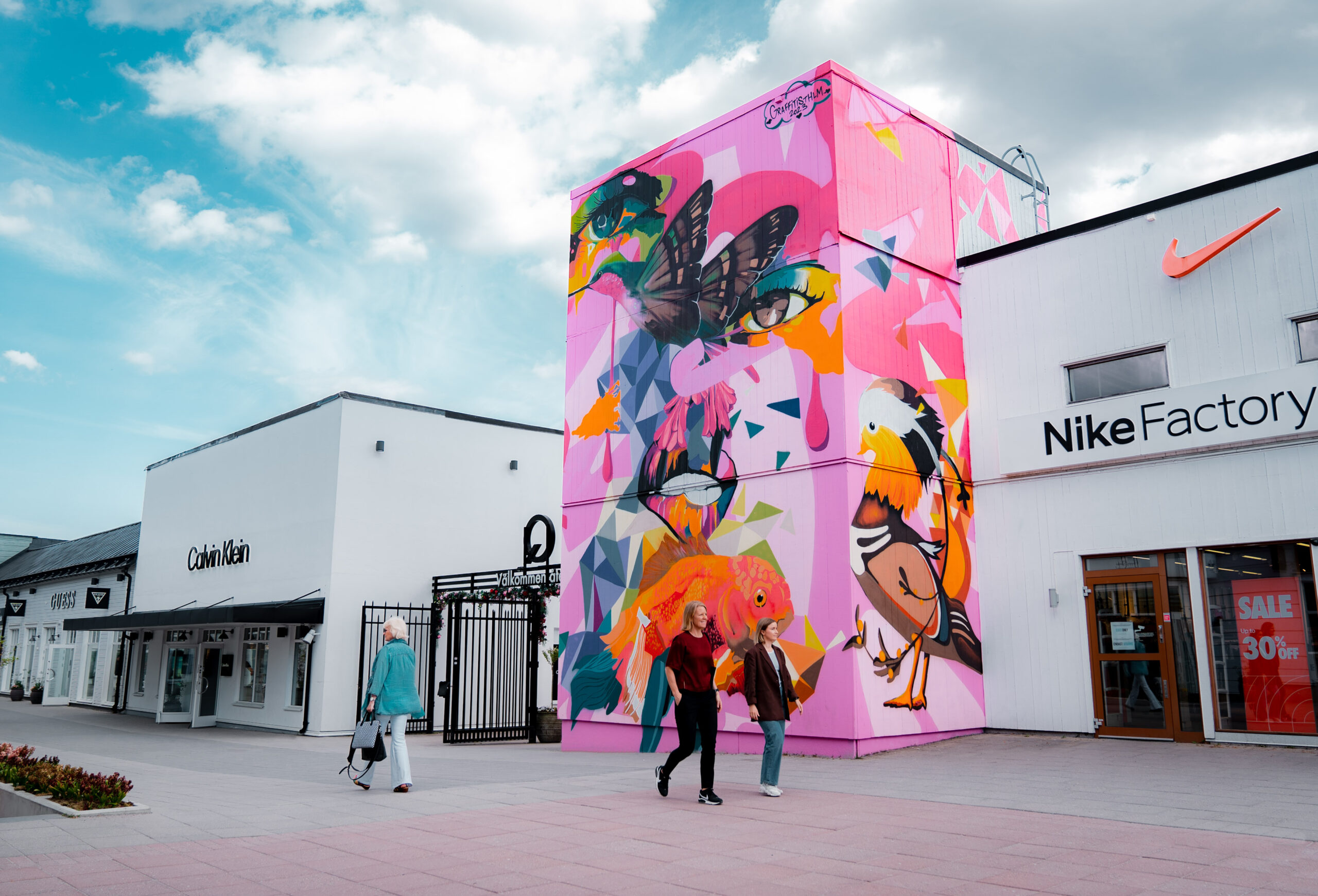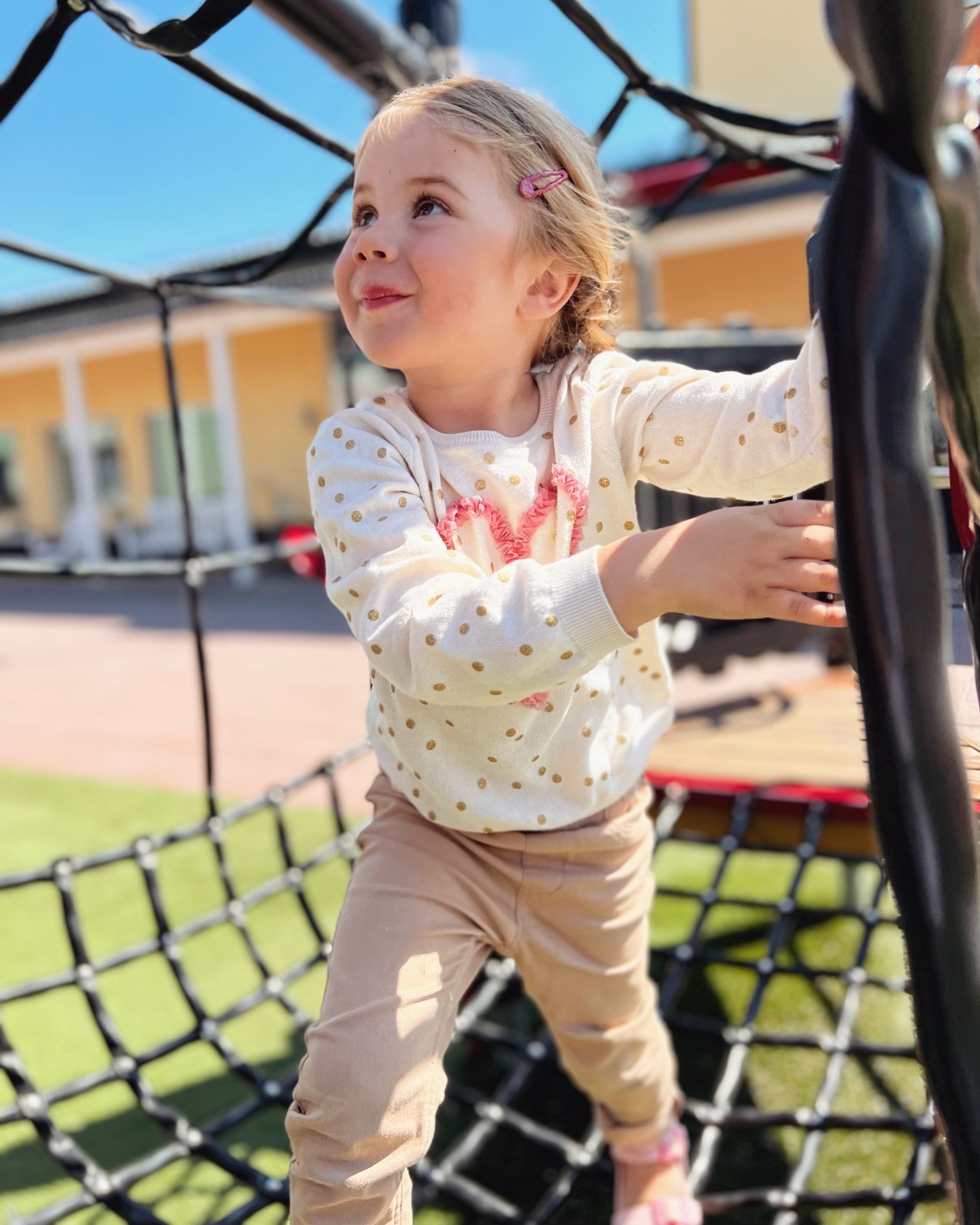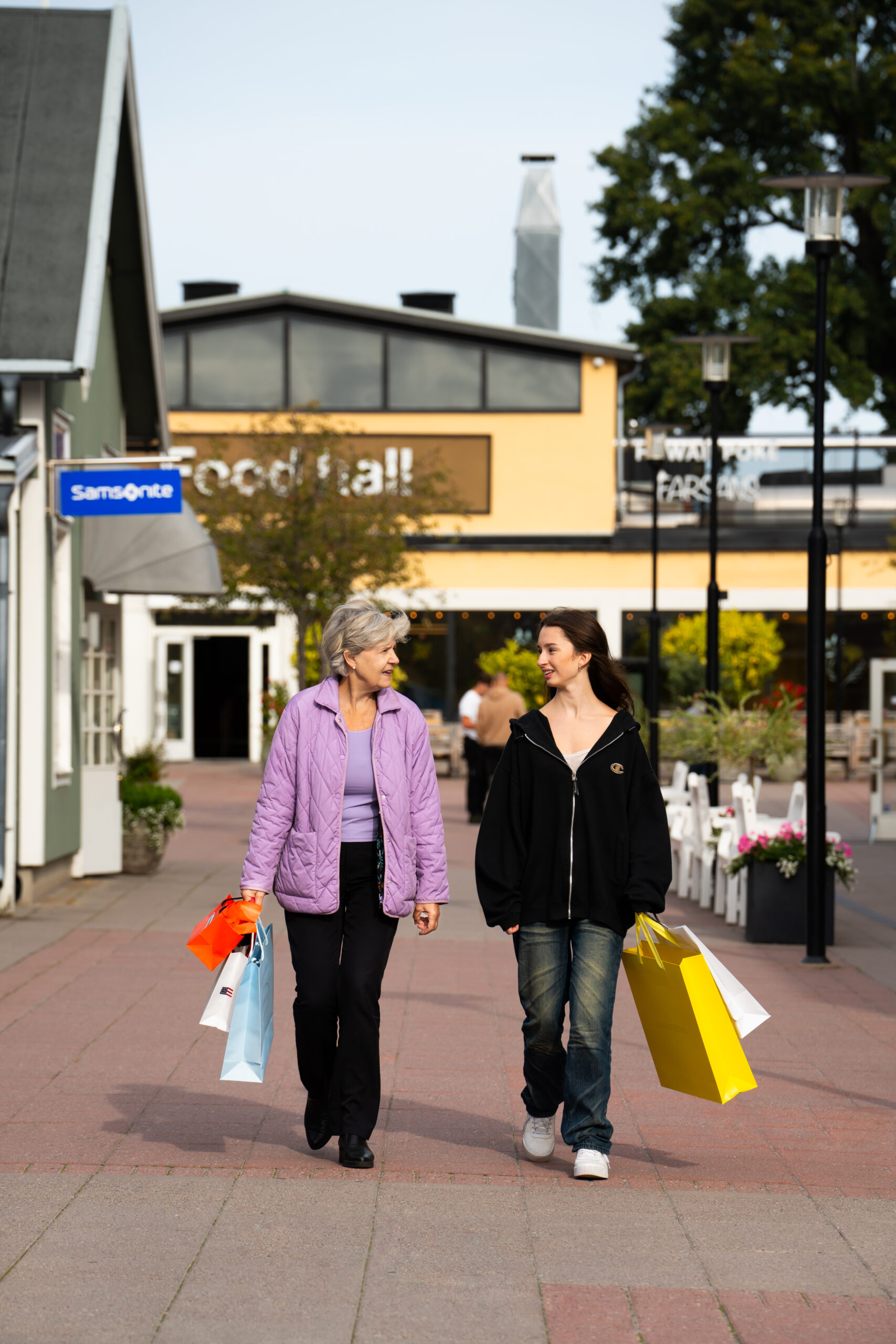Most people today know Stockholm Quality Outlet in Barkarby, just north of Stockholm, as Sweden’s biggest outlet shopping experience, home to around 70 stores and 200 brands. What they might not know is that, throughout much of the twentieth century, the area when SQO not sits buzzed with a very different kind of activity: military aviation.
The SQO site has a colorful history as an air force base where some of Sweden’s earliest efforts at powered flight took place. Many of our buildings date back to this exciting era, so look around while you shop: you might find you are buying shoes in a former airplane workshop or grabbing something to eat in a former guards’ post.
Here, we tell the story of the base and some of the people who worked there.
Wings of history
The first flight by motorized aircraft took place in the United States in 1903, when the Wright brothers flew 36.5 meters on their aircraft The Flyer.
“The Wright brothers got the whole world thinking. People starting building aircraft everywhere, in workshops, storage rooms and even in living rooms,” said Åke Lundberg, who provided technical support to the Swedish air force for more than 40 years.
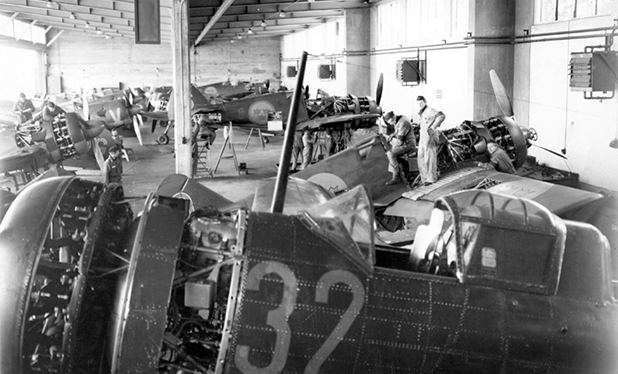
Barkarby airfield, F8, in full glory with interior from the 2nd division’s hangar. In the foreground is aircraft type B 5. Today, this large room is divided into smaller shop premises. 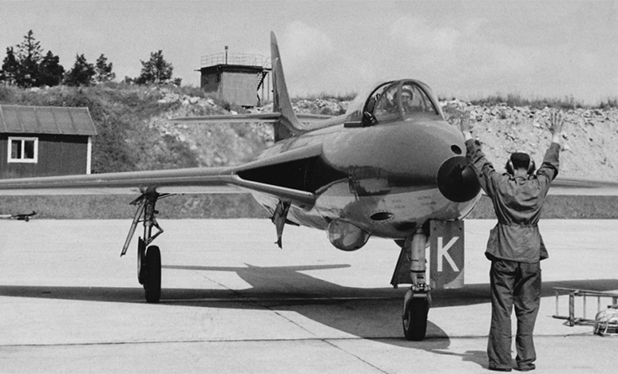
The weather station can be seen in the background of the picture. 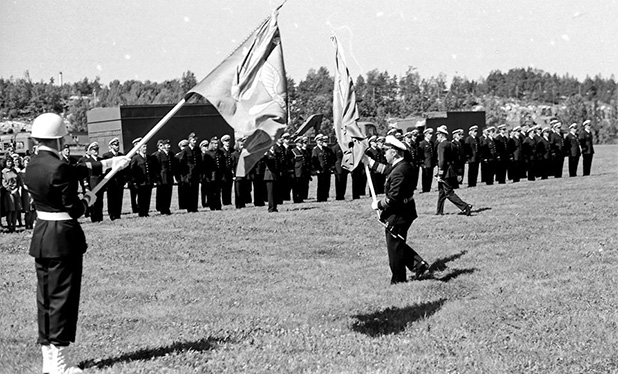
At H.M. The King’s 81st birthday, the flag of the flotilla is handed over to the flotilla commander: Lieutenant Colonel Georg Gärdin. The king ended the visit by writing his name over the fireplace in the officers’ mess. 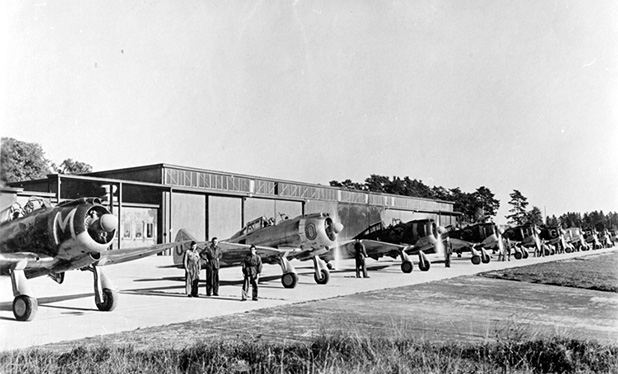
3:e divisionen J9 ready for start. 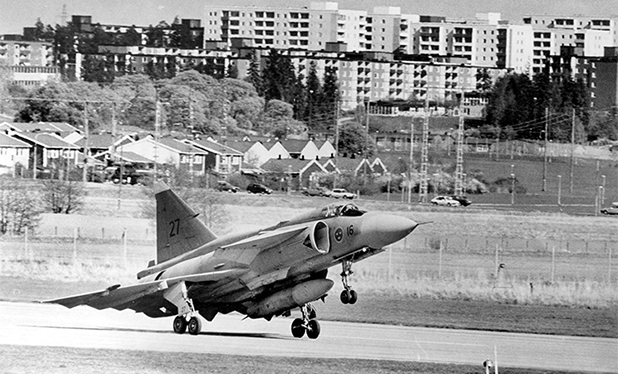
Första JA 37 lands at Barkarby. In the background is Akalla.
Take-off at Barkarby
Just ten years later, a field in Barkarby, 20 km north of Stockholm, had become home to some limited aviation operations and was named Hägerstalund Airport. At first, the field was used mainly for military training flights around Stockholm, but in 1919, foreign flights carrying both passengers and mail began.
Seven years after that, on July 1, 1926, the Army and Navy Air Force merged to form the Swedish Air Force and the new entity created an aviation department at Hägerstalund Airport, which saw its name changed to Barkarby Airport.
A flag from the King
When Bromma Airport, closer to the center of Stockholm, was inaugurated in 1936, all commercial activities were moved there, leaving Barkarby Airport as a wholly military base. With Nazi Germany in the process of upgrading its military, especially its air force, Sweden decided to boost its own aviation defenses in the Stockholm area. Two years later, the Royal Svea Air Flotilla F8 Barkarby began operations with the goal of defending Stockholm’s airspace against enemy air strikes.
Air Flotilla F8 took Stockholm’s patron saint St. Erik as its emblem, and on June 6, 1939, Swedish King Gustav V presented F8’s flag – complete with an image of St. Erik — in person. It was seen as a sign that F8 was held in high regard.
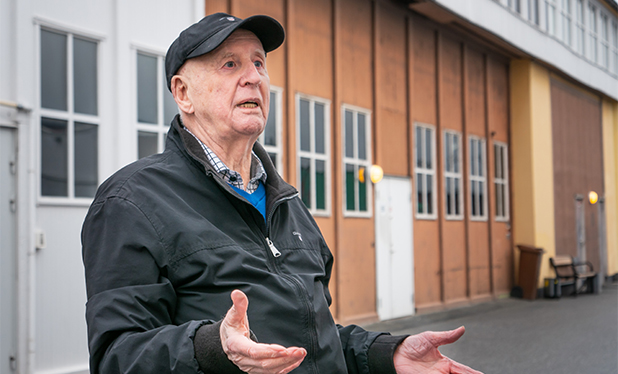
“The world’s best metal workers”
In the years which followed, F8 became a central part of the Swedish Air Force. In its heyday in the 1950s, 126 military aircraft of eleven different types belonged to the flotilla, which engaged around 100 pilots. In Barkarby, the pilots worked alongside mechanics, electricians, weapons engineers, signalmen, sheet metal workers, upholsterers, tailors, chefs and paramedics. F8 was, at the time, the largest employer in Barkaby’s surrounding municipality of Järfälla.
“We had the world’s best metal workers,” said former F8 vehicle mechanic Bo Pettersson. “When they were inspecting, they had magnifying glasses so they could see every little crack,” he said.
F8 was a highly regarded workplace, with important military missions, both domestic and foreign. Several international military operations were organized from Barkarby to countries including Finland, Lebanon and Congo. Teams from the base also participated in projects to Antarctica.
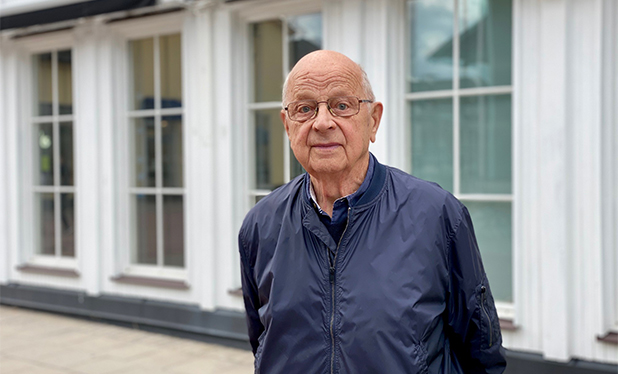
Åke Lundberg, former robot specialist at F8, in front of one of the well-preserved buildings in Barkarby. 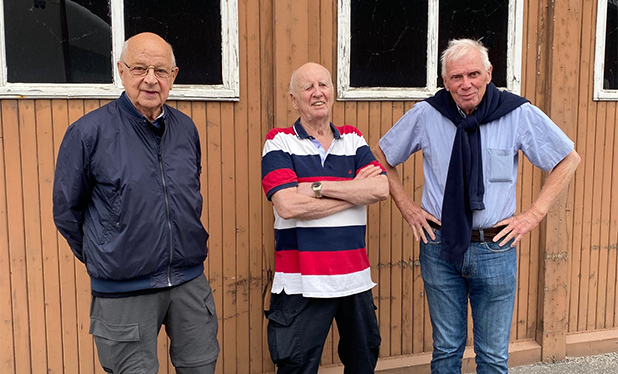
Åke, Bosse och Björn – all committed members of Kamratföreningen F8 – in front of an old hangar building in the outlet area.
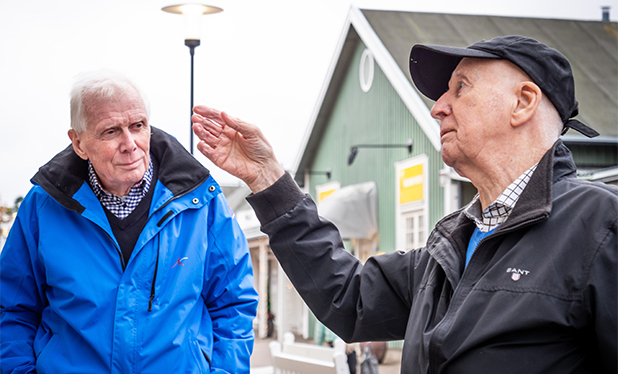
Björn and Bosse reveals some history of the buildings of the current stores and what was there long before Stockholm Quality Outlet became what it is today. 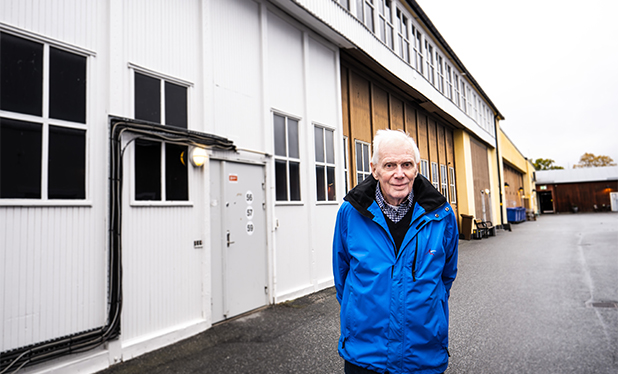
Björn in front of the old aircraft workshop in the Stockholm Quality Outlets area. 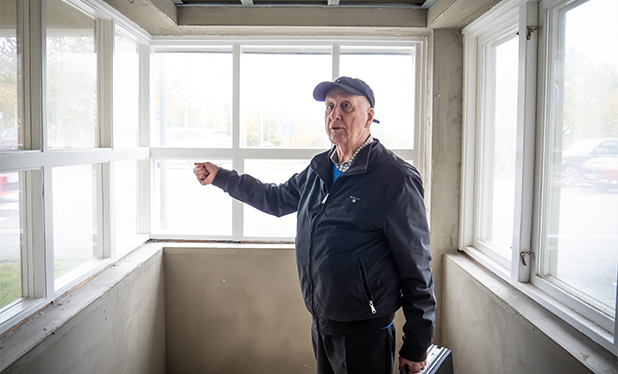
Bosse in the old guard cure, next to the arrest. 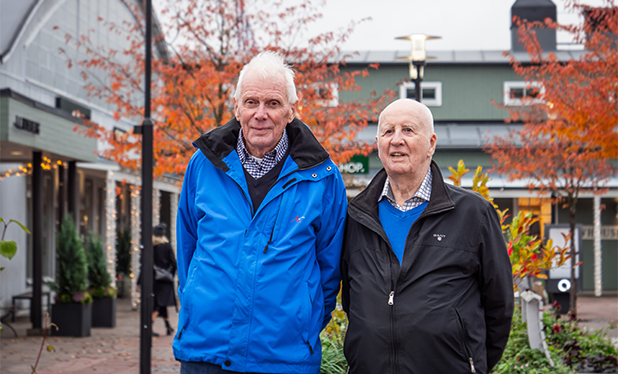
Björn and Bosse together in the Stockholm Quality Outlets area, as it looks today.
F8 was one of Sweden’s largest flotillas
The flotilla’s attack divisions were shut down during the years 1961-62, but two air defense divisions were added as the flotilla reorganized. Flight activity continued apace over the coming 13 years, with air transports and rescue helicopters a regular sight, until in 1974, a decision was taken to close. On June 30, 1974, F8’s remaining operations were shut down permanently. The airport remained a part of air force’s wider war organization, but slowly Barkarby airfield began to open to the public.
“Looking back, it is worth noting that F8 was allowed to represent the air force during foreign visits in Stockholm,” Bo Pettersson said. “One example is Lord Mountbatten, then England’s Commander-in-Chief,” he said.
Some famous Swedes have also walked the corridors on F8. Both the former soccer player Kurre Hamrin and the singer Povel Ramel performed their military service here.

A photo montage from past and present at Barkarby. Three Sk 15s of type Klemm 35, which were used as training aircraft in the air force 1940-49. 
A photo montage of what it might have looked like at Barkarby. 
A thought about what it might have looked like at the entrance to Stockholm Quality Outlet. 
Where Timberland is today, completely different scenes may have taken place before.
Many buildings preserved
The end of F8 was the beginning of a new era for Barkarby. With the military closure, Järfälla municipality was able to start planning a completely new district: Barkarbystaden.
Within the former grounds of the flotilla, there are today a large number of buildings which date back to the military era. These include the chancellery, the officers’ quarters, the cadet camp, the barracks, the non-commissioned officers’ command post, the conscripts’ dining hall and the hospital.
Several of these buildings are located in the area of Stockholm Quality Outlet. All buildings with a yellow-plaster facade are protected by cultural heritage preservation laws. Among the properties are ten buildings that were originally used for the air flotilla. They were built between 1939 and 1943 in true functionalist style. A cultural-historical assessment was carried out by Järfälla municipality’s cultural secretary in consultation with the city architect’s office, and of the military buildings, the following are rated of high conservation value:
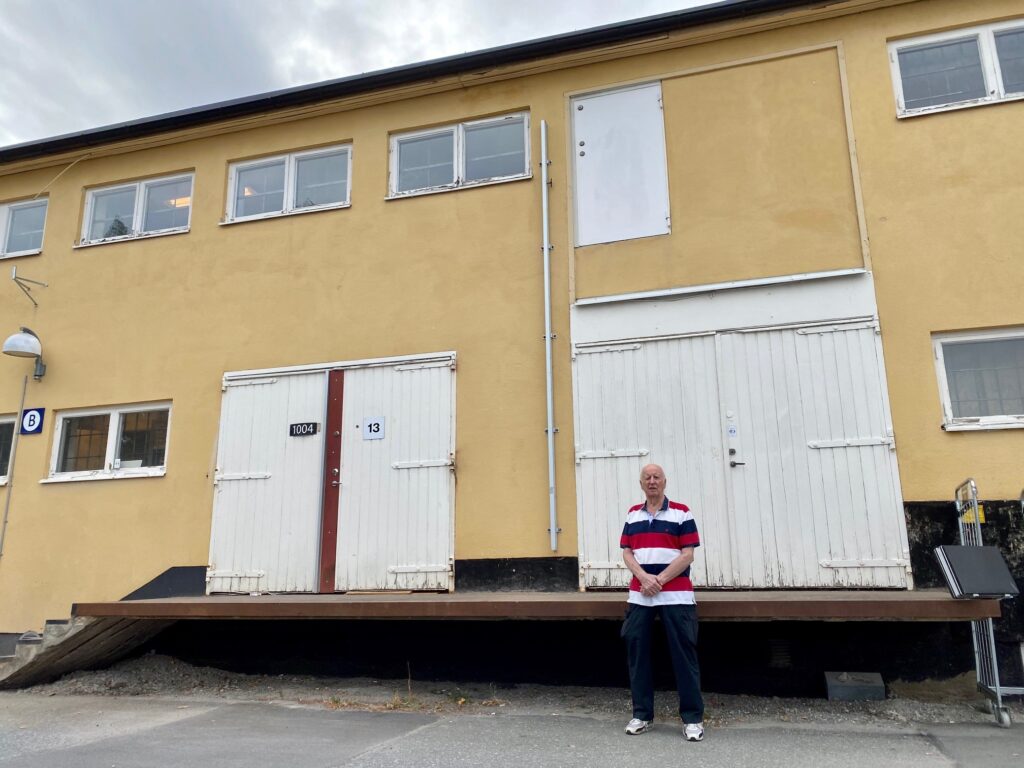
Bosse Pettersson framför lastkajen på gamla flygförrådet där han som värnpliktig fick hämta ut sin k-pist år 1953.
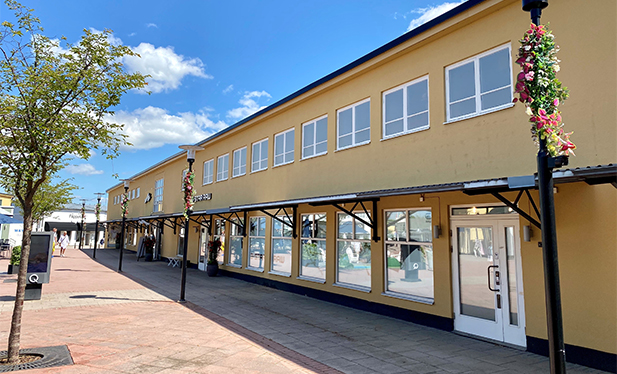
The old flight depot.
The depot (today: vacant units, previously Kavat, Odd Molly)
The depot was the central repository for the air base: all the equipment for aviation, signaling, construction and medical support that the flotilla needed was stored and sent out from here. It was also where the guns were kept. From this building, air force soldier Bo Pettersson retrieved his first machine gun in 1953, a green-lacquered M/45 Carl Gustaf. Bo had to buy his own padlock for a weapon locker he was responsible for, but ammunition for the weapon was held centrally, in special weapons cases. The aviation depot also had a workshop for safety equipment and parachute packing, as well as staff accommodation.
The building was rebuilt for Stockholm Quality Outlet in 1997-98.

Bosse Pettersson remembers old, stories from F8’s glory days in front of the arrest guard. 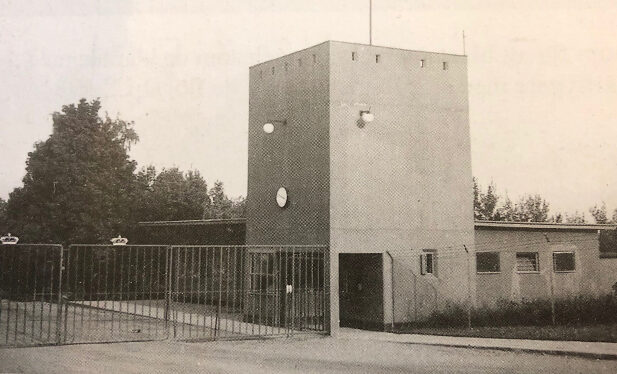
The guard and detention building was built in 1938. The photo is from 1951. 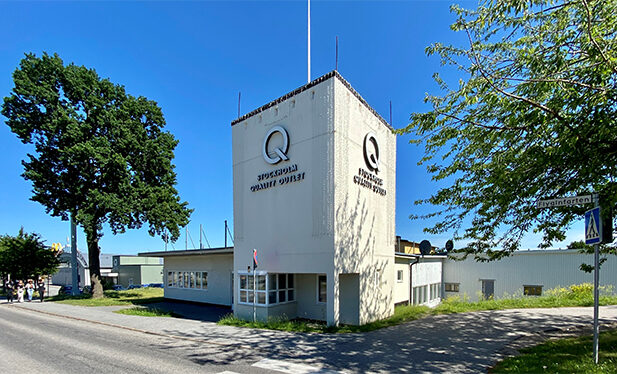
Old guard and jail building today.
The guard and detention building (today: a Food hall)
The construction of the guard and detention building began in 1938 and was completed in 1939, while the tower was added during development works in 1943. For over 35 years, it was home to the conscript guard and the fire brigade. The flotilla’s police unit and conscripts served here. This was also where you might be held if you broke the rules. Maybe you had flown without permission, or maybe been up to no good the city? If so, you could have wound up behind bars here, under the supervision of the guard force.
On the other side of the road, where IKEA’s car park is today, was the fire station, with its various rescue vehicles. Opposite the flotilla guard, there were also barracks for the fire brigade, built in 1946. They were demolished long ago.
The building was rebuilt for Stockholm Quality Outlet 1997-98. In September 2021 a Food hall was inaugurated here.
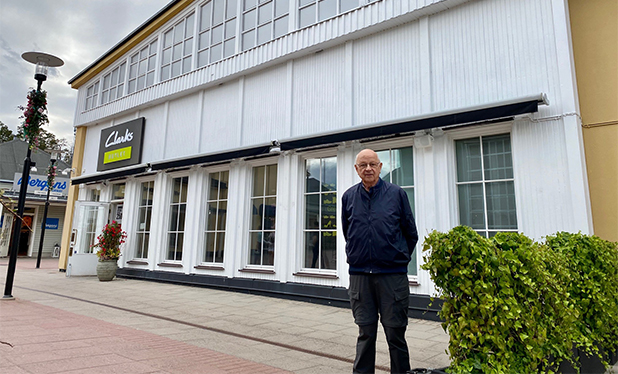
Åke Lundberg in front of the previous robot workshop where he once worked. 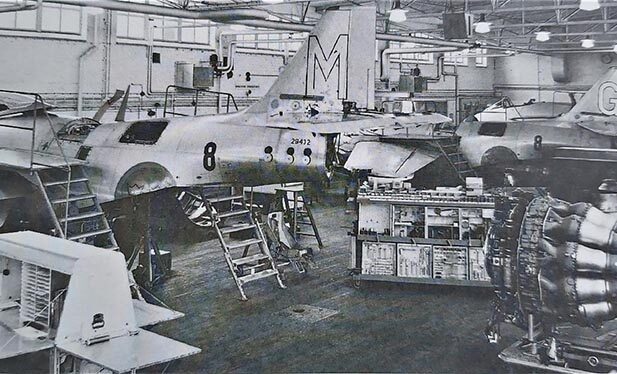
The aircraft workshop where inspections and repairs were carried out on the flotilla’s more than 120 aircraft. 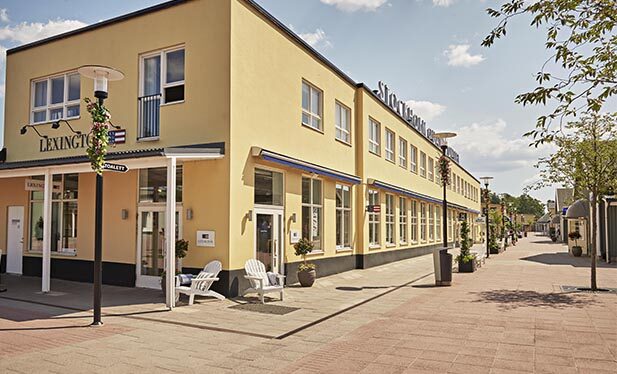
The aviation workshop today houses the Lexington store and other businesses. 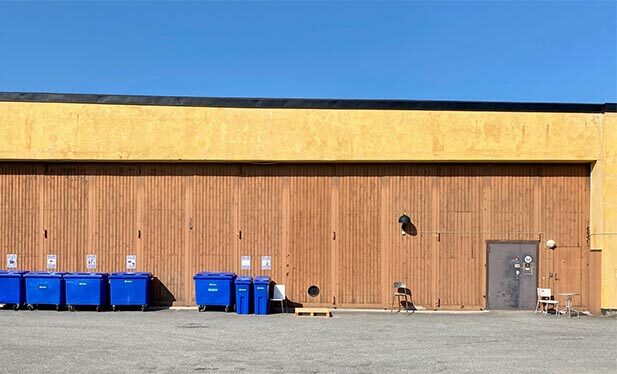
Garage doors in the courtyard of the old aircraft workshop. 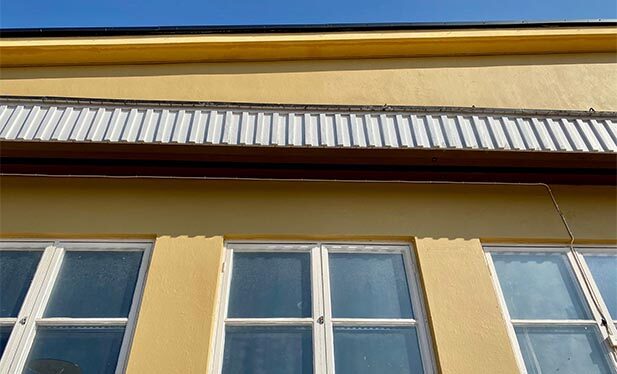
Rails for large gates, outside the old aircraft workshop.
The Aviation Workshop (today: Clarks, Headspot, Lexington & Levi’s)
The aircraft workshop was built at the same time as the guards’ building in 1938-39. Here, inspections and major repairs were carried out on the flotilla’s more than 120 aircraft. Eleven different types of aircraft were wheeled in and out. These included propeller aircraft such as the J8 Gloster Gladiator, J9 Republic Seversky EP-1, J22 FFVS, J28B De Havilland Vampire (the attack group’s first jet), SAAB J29 and the British J34 Hawker Hunter.
Between 1956-62, HKP3 and HKP4 helicopters, transport aircraft, and the RB 68 missile system were also inspected in the aircraft workshop.
After F8’s closure in 1973, until 1991, the air force’s film and television studio was located in the southern half of the building. The company Ostermans Aero AB, with its helicopter operations, occupied the northern half in 1975-97.
The building was rebuilt for Stockholm Quality Outlet 1997-98.
Car workshop/garage (today: Mangal)
The car workshop/garage was built in the late 1930s after a substantial investment in F8. The large number of vehicles belonging to the flotilla, the Air Staff, and the Air Administration were repaired and serviced here. When a new garage was built elsewhere, the entire building became a car and tire workshop, as well as a laundry hall.
Rebuilt for Stockholm Quality Outlet 1997-98.
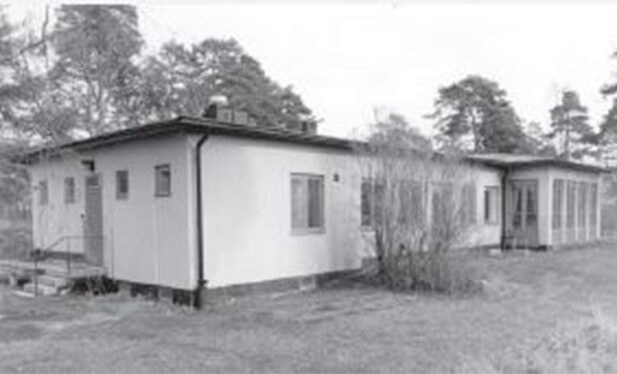
Old photo of the mess. 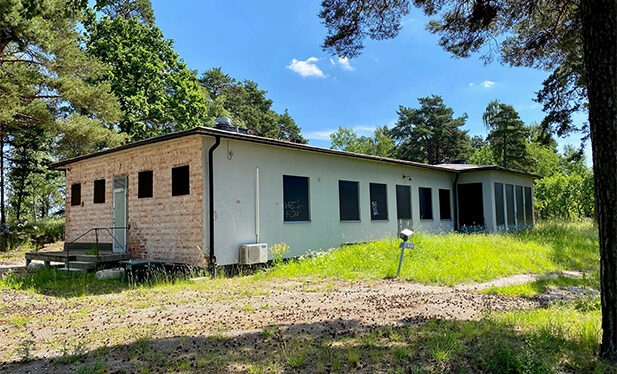
Photo of the mess building as it looks today.
Non-commissioned officers’ mess
The non-commissioned officers’ mess was built in 1941 to a design by the architect Ture Sellman. The building contained housing for unmarried non-commissioned officers between 1943 and 1974. They could eat their meals, take coffee breaks, and hold larger parties here. A strict hierarchical structure characterized activities in the mess in the early days of the building’s existence, with activities divided by rank. However, things eased up in the 1980s.
Rebuilt for Stockholm Quality Outlet 1997-98.
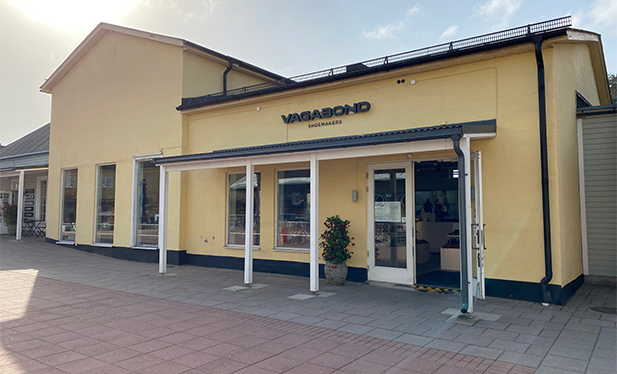
Engine testing house “Motorbocken”
The upper part of the Motorbocken building was erected in 1942-43, and the lower part of the yellow house was added in 1997-98, when it was rebuilt for Stockholm Quality Outlet. Here, the piston engines for aircraft such as the J8 Gloster Gladiator, J9 Republic Seversky EP-1 and J22 FFVS were tested after major repairs and inspections in the flotilla workshop.
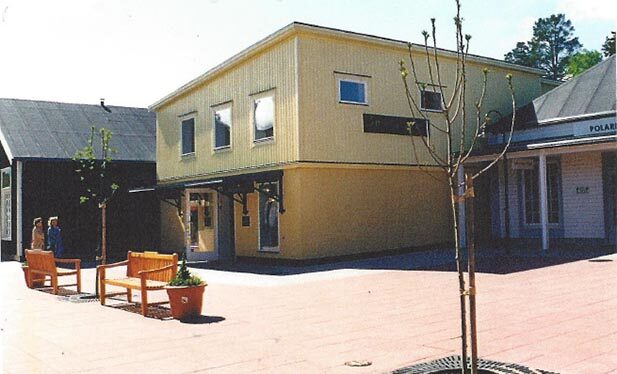
The heating plant supplied the buildings around the flotilla workshop with heat and hot water. 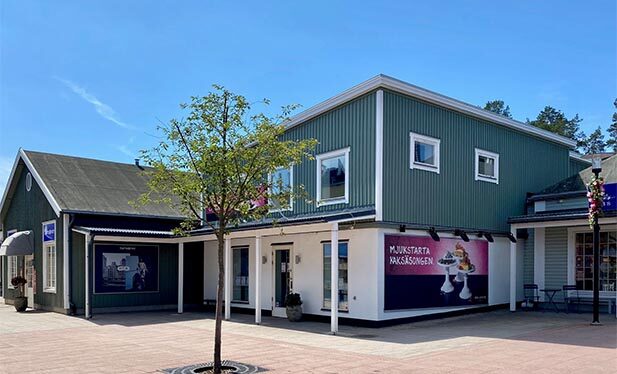
Over the years, Delicato, among others, has had a store in the old heating plant.
The heating works (formerly: Delicato)
This building was home to the heating works for the flotilla workshop, supplying both heating and hot water. The building was constructed in 1938-39.
Rebuilt for Stockholm Quality Outlet 1997-98.
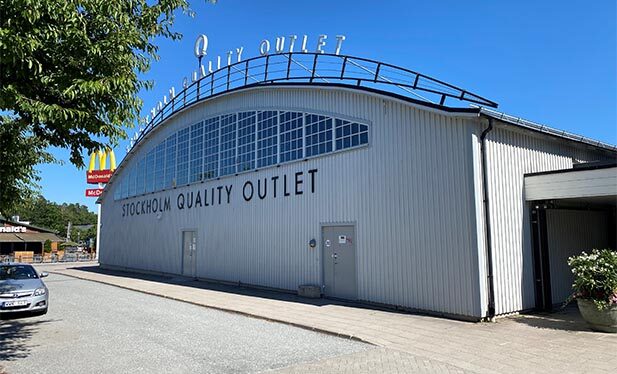
The hangar-llok-alike-building at the old entrance to the air flotilla was built in 1998. Today you will find the Gant store in here. 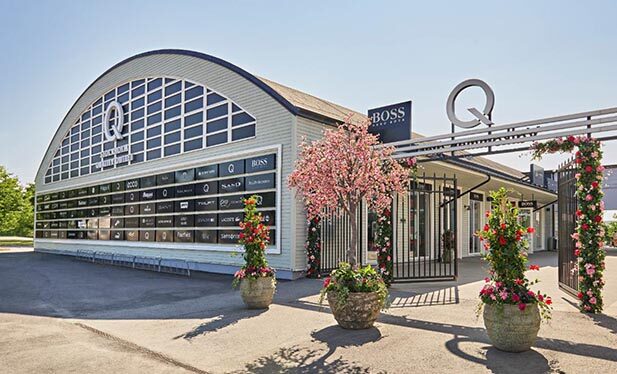
The main entrance to Stockholm Quality Outlet was built in 2016. The hangar-look-alike building today houses the stores of Hugo Boss and Tommy Hilfiger.
The hangar
The flotilla’s very first hangar still exists and now houses the Husqvarna Concept store. It lies within the Barkarby shopping area, adjacent to Stockholm Quality Outlet. The building was known as Hangar 1 and belonged to the First Attack Division. One of the hangar-like buildings at Stockholm Quality Outlet, now a Gant store, was built in 1998, while the other, at the opposite end of Stockholm Quality Outlet, now housing Hugo Boss and Tommy Hilfiger, was built in 2016.
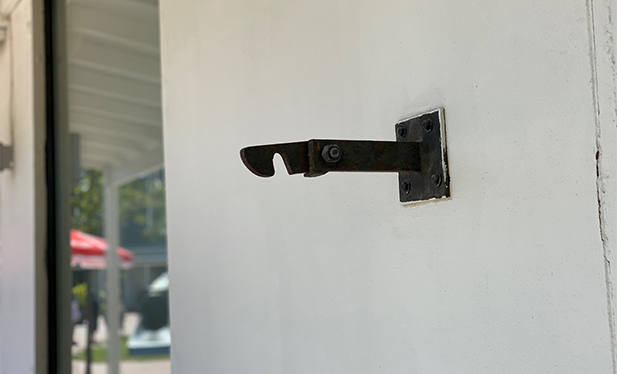
One of the three hooks is in the wall opposite the Levis store. 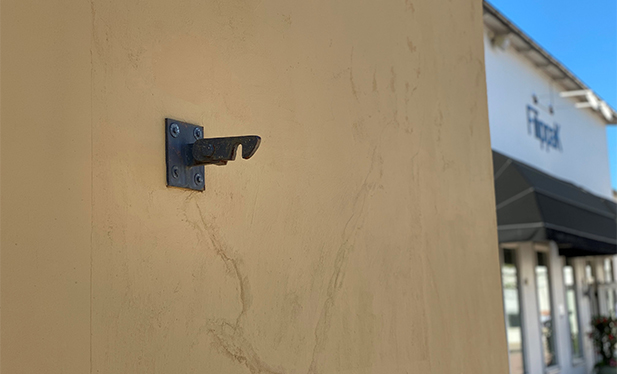
Another hook is available at the old aircraft workshop.
Three hooks
There are three large hooks fixed to building facades within the area of Stockholm Quality Outlet. Their purpose is a mystery, as nobody seems to know what they were used for. Maybe you know more than we do? Feel free to contact us if you can answer this riddle.
Fun Fact: The cover image for ABBA’s album Arrival was taken at the airport here in Barkarby in a Bell 47 helicopter.
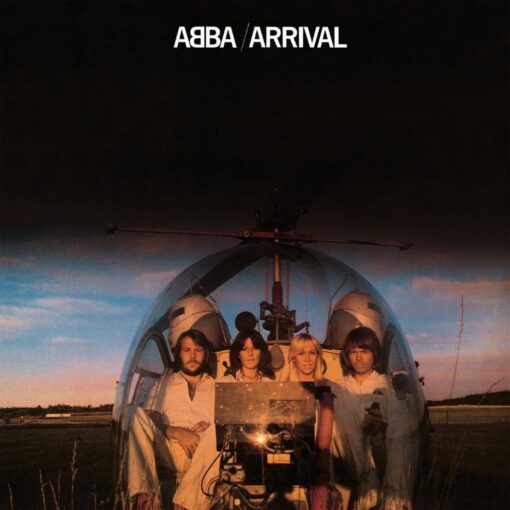
Friends of Royal Svea Air Fleet F8
After the closure of the F8 air flotilla, concerns arose that the enormous amount of knowledge about the air flotilla, a workplace that meant so much to so many, and built up over 36 years of intensive aviation, might be lost. To keep the memories alive, an association called the Friends of the Royal Svea Air Fleet F8, in Swedish the F8 Kamratförening, was established. The goals of the association are to nurture, strengthen and develop togetherness and camaraderie among members and maintain the strong relationship, which has long existed between military, civilian and conscript personnel. It is a not-for-profit organization which also works to share knowledge about defense issues, especially in the Järfalla municipality where Barkarby is located.
You don’t need to have worked at F8 to join the association. If you have a general interest in aviation, defense or military history, you are also welcome!
To find out more, see: http://www.f8kamratforening.nu/
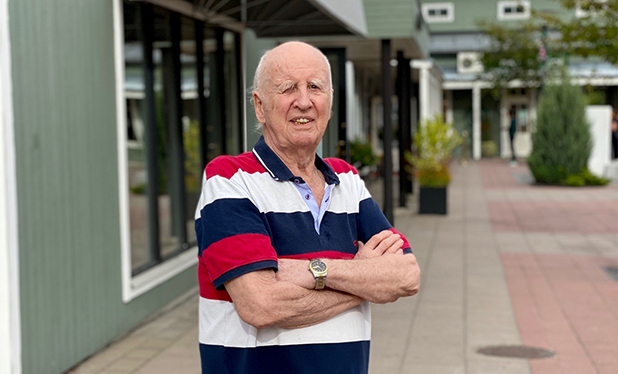
Name: Bo Pettersson
Background: Spent almost 16 years at F8, followed by 30 years working for Järfälla municipality within after-school activity provision. A keen sports enthusiast, Bo also has glittering track record as a national hockey coach. When the Stockholm Sports Association turned 100 years old, Bo was awarded its highest accolade, a gold medal for service.
Age: 87.
Now: Treasurer of the Friends of F8 Association for more than 20 years and a board member for 25 years.
Then: Bo arrived at Barkarby as a pilot on November 11, 1953. He left that role on December 11, 1954 and began life as a civilian employee on December 13, 1954. Bo worked as a car mechanic for F8 until 1969, which was a key role: the cars that left the flotilla were expected to cover large areas of the country. Bo was also chairman of the local union and a member of the F8 works council.
Others say about Bo: “He is a man with a rare level of experience within association life. Running a non-profit association with a man like Bo is quite easy.” Björn Kristoffersson, Chairman of Friends of F8.
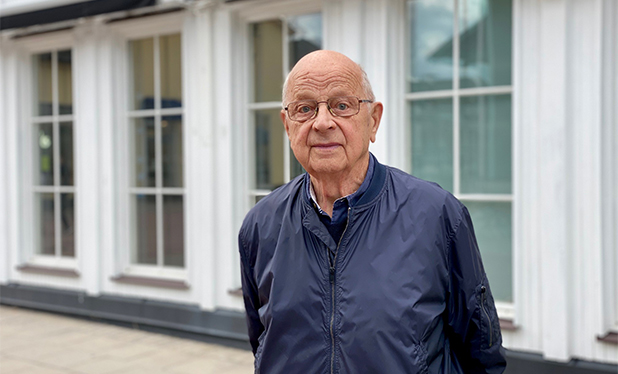
Name: Åke Lundberg
Background: Åke has a keen interest in aircraft and has always been fascinated by the mechanics behind them. His first contact with the air force was in 1950 at F4 in Östersund.
Age: 87.
Now: Committed member of Friends of F8.
Then: F8 had two air defense missile divisions whose mission it was to defend Sweden against potential enemies. The entire south coast of Sweden was equipped with missile systems and Åke’s job was to ensure they were up to scratch. From 1965, Åke held various roles supporting the development of Barkarby. He was the last military commander there, and along with five conscripts, kept the airport open for military flights. After that, he began work connected with the field on behalf of the municipality, well into the 2010s.
Others say of Åke: “What Åke doesn’t know about aircraft is not worth knowing.” Björn Kristoffersson, ordförande för Kamratföreningen F8.


